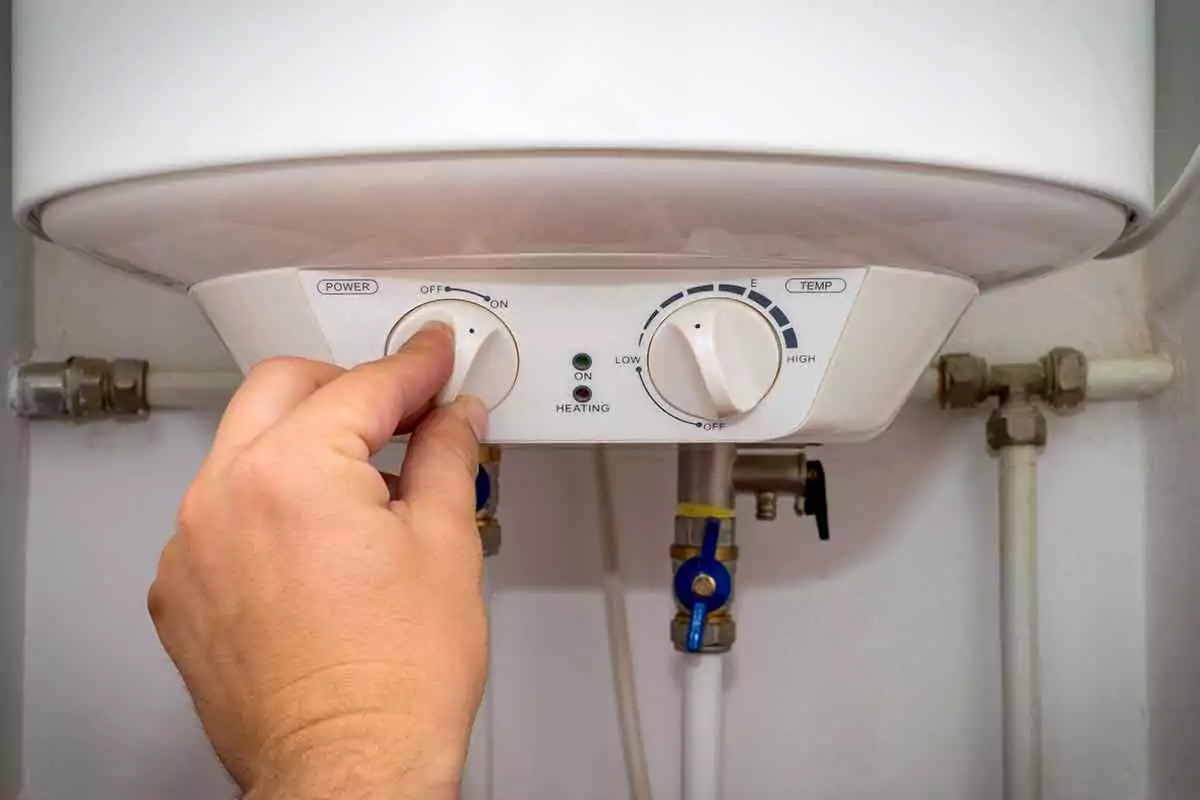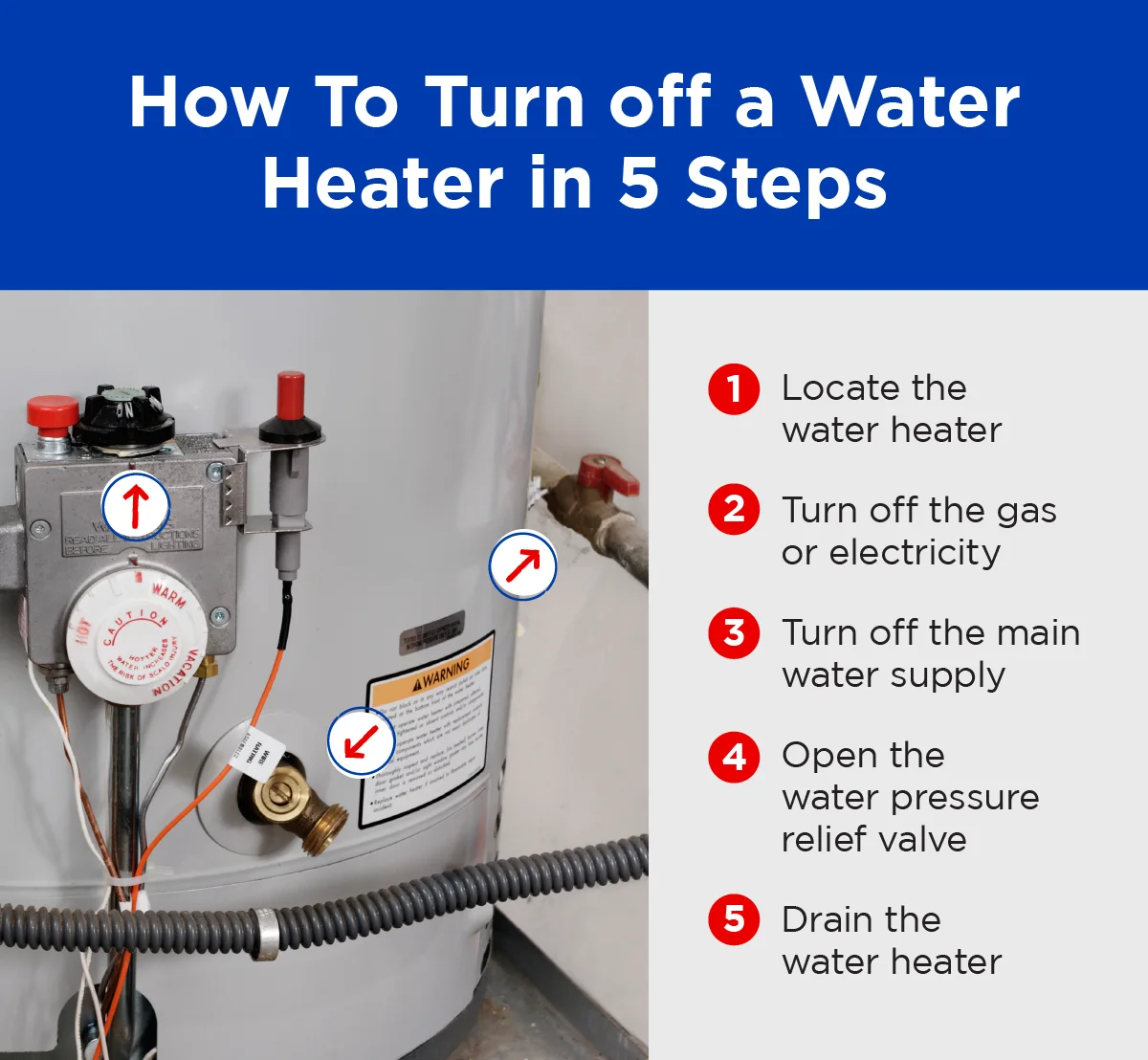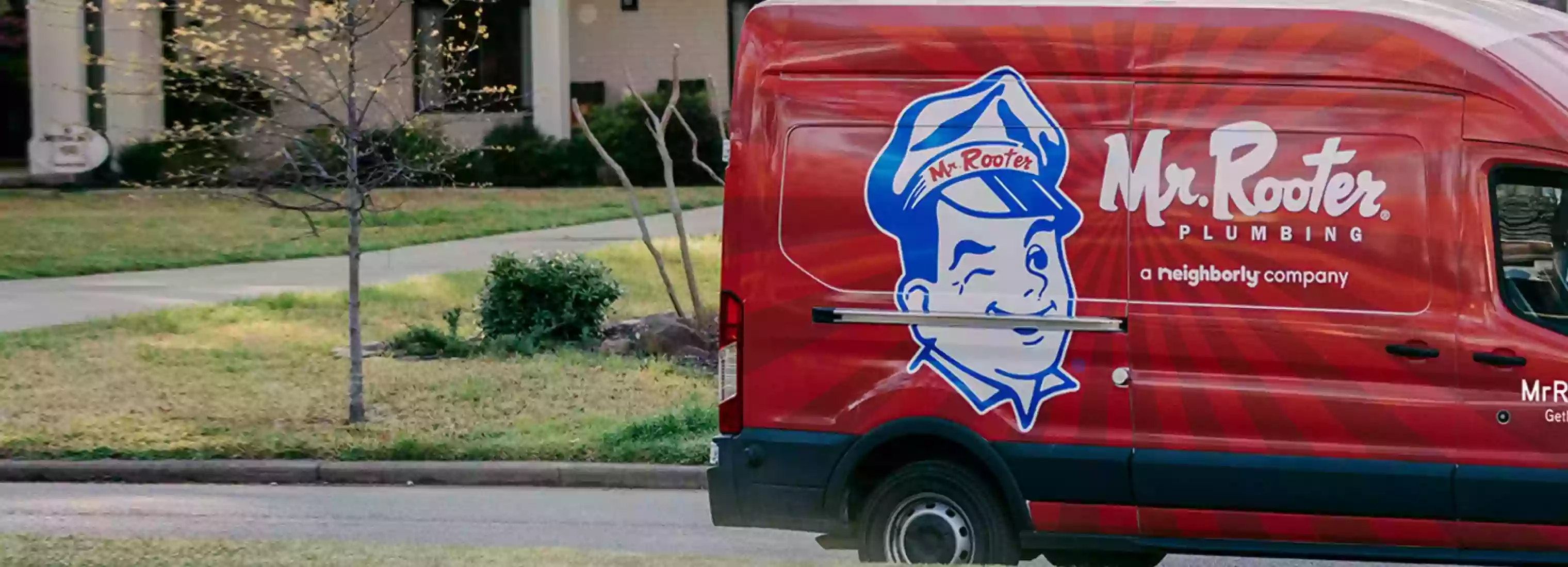How To Turn Off a Water Heater in 5 Steps
 Whether you’re performing yearly maintenance on your water heater, trying to figure out why the tank is rumbling, or your water heater has sprung a leak, learning how to turn off a water heater isn’t complicated. But you could make things worse if you don’t know how to do it correctly.
Whether you’re performing yearly maintenance on your water heater, trying to figure out why the tank is rumbling, or your water heater has sprung a leak, learning how to turn off a water heater isn’t complicated. But you could make things worse if you don’t know how to do it correctly.
Being able to shut off your water heater can stop common water heater problems from worsening, so it’s a good idea to familiarize yourself with your water heater and what you need to do to shut it off. Follow this guide to find out how to turn off a water heater safely.
1. Locate the Water Heater
Locating your water heater is important if you are maintaining it, troubleshooting a problem, or if you need a professional to repair the unit.
Most water heaters are located in a utility closet, garage, or basement. If you live in an apartment or condo, the water heater may be tucked away in a shared utility closet.
2. Shut Off the Gas or Electricity
Once you’ve located your water heater, you’ll need to disconnect it from the electricity or gas supply. This will prevent the water heater from continuing to heat water and can help protect you (or anyone else) who needs to work on it.
While tankless water heaters aren’t immune from problems if you’re concerned about the damage a leaking water heater can cause, a tankless system might reduce your fears. Because it doesn’t have a large reservoir like a tank water heater, leaks are much less destructive. They’re available in gas and electric versions, so the following instructions apply to them, too.
How to turn off an electric water heater
Learning how to turn off an electric water heater starts by examining the water heater.
- If you see a power switch located on the tank, turn it off.
- After you’ve turned off the power switch (or if your water heater doesn’t have a switch), turn off the circuit breaker that powers the water heater. Read the circuit breaker chart carefully — there may be more than one circuit powering the water heater.
How to turn off a gas water heater
The first step to figuring out how to turn off a gas water heater is to locate the gas supply. You should see a metal hose or pipe leading to the water heater.
- Turn off the gas control valve on the water heater, usually located near the bottom of the tank. This will stop the flow of gas and turn off the pilot light.
- Check that the pilot light is out. If it isn’t, follow the instructions in your water heater manual to turn off the unit.
Some gas units may have an electrical backup, so make sure to check your circuit breaker to ensure any power going to the heater is turned off.

3. Turn Off the Main Water Supply
Now that you’ve turned off the gas or electricity used to heat your water, it’s time to cut the water supply to the tank. To turn off water to a water heater, look for a valve near the tank and turn it clockwise.
If a leak is coming from the water line, you might need to look for the main water shut-off valve. This valve will shut down all the water coming into your house.
If you have a basement or crawl space, you can usually find the main valve there. If you’re in an apartment, townhome, or condo, it might be located outside under a plastic cover, usually marked “Water Supply” or “Water Meter.”
When you locate the supply, turn the valve clockwise until it stops. Go inside and try turning on a faucet. After a few moments, it should stop running.
4. Open the Water Pressure Relief Valve
Before opening the pressure relief valve, wait at least a few hours. This will help the water cool down. You can also take a hot shower to get hot water out of the tank faster.
The water pressure relief valve is located on your water heater and helps prevent unsafe pressure inside the tank. It’s usually found at the top or side of the tank. There may be a line that runs from the valve to the bottom of the tank.
Flip the lever to open the water heater shut-off valve. Be careful — if there’s still hot water in the tank, it may come out of the line.
5. Drain the Water Heater
After turning off the water supply and opening the pressure relief valve, drain the water heater. Draining it will allow a service professional to repair or replace the water heater more easily and prevent surprise leaks.
Before you drain the tank, you’ll want to get a hose to direct the water into the drain. If there isn’t a drain nearby, use a bucket.
- Connect a hose to the drain valve located near the bottom of the water heater tank.
- Open that drain valve.
- Let the water drain out. Close the drain valve if you need to empty the bucket, then reopen it to continue draining.
Don’t turn the water supply back on, close the pressure relief valve, or close the drain valve after the tank is empty. Otherwise, the tank could refill with water. You also shouldn’t relight the pilot light until the heater has been refilled, repaired, or replaced.
Get Water Heater Help With Mr. Rooter Plumbing®
Have you figured out how to turn off your water heater but still aren’t sure what’s wrong with it? Schedule an appointment with Mr. Rooter Plumbing. Our water heater repair service professionals can inspect your water heater, diagnose common water heater problems, and help you figure out what your next step should be.
How To Turn off Water Heater FAQ
Have more questions about how to turn off water to a water heater? Mr. Rooter Plumbing has answers.
When do I need to turn off my water heater?
Most water heaters should be turned off at least once a year for maintenance. Draining the water heater to remove sediment can help extend its lifespan.
You should also drain a water heater if you are going on an extended vacation (more than two weeks) or if it’s in a vacation home you won’t be using for a season or more. If you aren’t sure when or how to shut off a water heater, contact a service professional.
Where is the water heater shut-off valve?
You may need to use several valves to turn off a water heater, like the water supply valve (located at the top of the tank) and the gas supply valve (if your water heater runs on gas). You should also cut the power to a damaged water heater by flipping the circuit breaker and powering the heater.
Is it safe to turn off a hot water valve?
Yes, it's safe to turn off the water supply valve on a water heater. You should use caution before you open a water heater’s pressure relief valve or the drain valve, though. Opening these valves could release hot water.
How do I turn off a water heater that is leaking?
Here’s how to shut off a water heater that is leaking:
- Turn off the water supply to the unit.
- Turn off the gas or electricity powering the water heater.
- Contact a professional.
Do tankless water heaters leak less?
Tankless water heaters aren’t leak-proof, but if they do spring a leak, they’re less likely to cause major damage to your home. Because they don’t have gallons of water in a reservoir tank, you don’t have to worry about all that water spilling out in the event of a rupture.
Does a leaky water heater have to be replaced?
Just because a water heater is leaking doesn’t mean you need to replace it. A leak could be caused by a faulty pressure gauge or a loose connection to the water supply. Contact a service professional to find out if your water heater needs to be repaired or replaced.
 Click to call
Click to call


